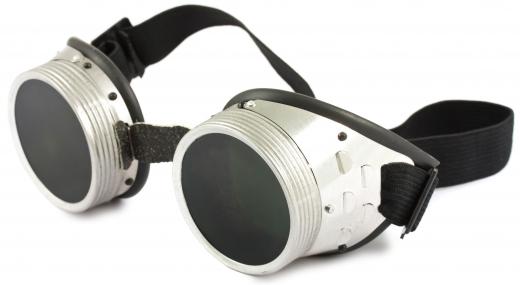At AboutMechanics, we're committed to delivering accurate, trustworthy information. Our expert-authored content is rigorously fact-checked and sourced from credible authorities. Discover how we uphold the highest standards in providing you with reliable knowledge.
What is Spin Welding?
Spin welding is a process by which two different parts are fused together through the use of heat generated by the force of friction. The friction is created by one of the pieces being held in place, while the other piece is held against it and revolved in a spinning motion. This spinning motion while the two pieces are held together generates friction. The friction then results in an intense heat that allows the two pieces to begin fusing or joining together.
When the two pieces begin to join together, the stationary piece is then released from the vice. The second piece is then allowed to spin along with the first until the created seam in the two pieces cools. The final result is that the two pieces are joined as one.

In order for the two pieces to be properly fused together, the correct amount of pressure must be applied at the point of axis in the piece’s rotation the moment the pieces are allowed to spin. The pressure must hold the two pieces together until the seam is cooled and the two pieces are fused. Applying the proper pressure to the right point is crucial, because the amount of pressure applied to the two pieces can either help create a strong fusion or can shift the two pieces if the pressure is uneven, making the pieces fuse unevenly or even breaking the seam.

There are only a limited number of materials conducive to spin or friction welding. Thermoplastics, such as Xantar® or Stanyl®, are the only materials that allow the process of spin welding to be completed successfully. Soft plastics cannot withstand the force created by spin welding, nor can they handle the heat generated by the creation of friction. Metals are not conducive to the process either, as the process does not generate enough heat to efficiently create the friction needed to fuse the two pieces securely.
Any high-speed machine that functions by using one stationary piece along with one spinning piece may be used as an agent in the process of spin welding. Lathes, drill presses, or specialized spin welding apparatuses may be used to effectively fuse two thermoplastic pieces together. In order for this to be successful, however, the user must first have knowledge of any materials that are used and the machines used to complete the process. He must also be thoroughly trained in the spin welding process to be successful.
AS FEATURED ON:
AS FEATURED ON:












Discuss this Article
Post your comments